US Drillers Add Oil and Gas Rigs for Fifth Week in Six
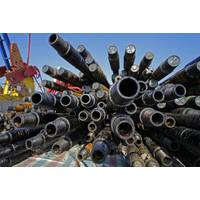
U.S. energy firms this week added oil and natural gas rigs for the fifth time in six weeks although growth in the rig count over the past few months has slowed as drillers continue to focus on capital discipline despite firmer oil prices.The oil and gas rig count, an early indicator of future output, rose three to 491 in the week to Aug. 6, energy services firm Baker Hughes Co said in its closely followed report on Friday.The total rig count was up 244 rigs, or 99%, over this time last year. The count has more than doubled since falling to a record low of 244 during the week of Aug. 14, 2020, according to Baker Hughes data going back to 1940.U.S.
Markets: Oil Rises as Inventories Expected to Fall

Oil rose on Tuesday on expectation of a continuous decline in U.S. oil inventories, recouping some losses from the previous session due to lingering concern over rising cases of the Delta coronavirus variant.Brent, the international benchmark for oil prices, rose 60 cents, or 0.8%, to $73.49 a barrel, at 0905 GMT.U.S. West Texas Intermediate (WTI) crude was up 63 cents, or 0.9%, at $71.89 a barrel.Both markets dropped more than 3% on Monday."Some market participants see Monday’s price set-back as a bit exaggerated, considering that we are likely to see another decline in oil inventory this week," UBS analyst Giovanni Staunovo said. A preliminary Reuters poll showed U.S.
Top U.S. LNG Exporter Launches Effort to Measure Emissions

Cheniere Energy Inc, said on Thursday it would quantify carbon emissions from its suppliers and production sites and supply the information to customers.LNG buyers have begun asking suppliers for natural gas sourcing data and greenhouse gas emissions to reduce their own carbon footprints. Several LNG producers are proposing adding carbon capture and storage alongside their LNG projects.Cheniere said it signed agreements with five natural gas producers and several academic institutions to implement quantification, monitoring, reporting and verification…
Investors Brace for Poor US Shale Earnings
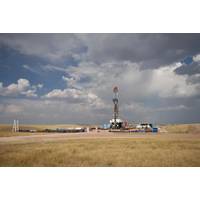
Investors are bracing for weaker results from U.S. shale players in coming days as lower oil and natural gas prices and cost-cutting measures have weighed on third-quarter operations.Major shale producers ConocoPhillips and Concho Resources this week kick off quarterly earnings reports for a group whipsawed this year by volatile pricing and investor demands for improved returns. Oil and gas producers have cut drilling and slashed jobs amid worries over pricing outlooks.U.S. oil prices are down 17% and natural gas is down about 31% from a year ago, undercutting production increases.
Chevron to Buy Anadarko for $33 Bln
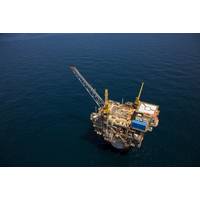
Chevron Corp on Friday said it will buy oil and gas producer Anadarko Petroleum Corp for $33 billion in cash and stock in a deal that doubles down on its bet on U.S. shale and LNG as U.S. energy production is shattering records.The deal makes Chevron the second-largest major by crude production, behind Exxon Mobil Corp, up from fourth. It expands Chevron's reach in two areas where U.S. energy output is surging - shale from the Permian Basin of west Texas and New Mexico, and liquefied natural gas (LNG) - which have helped make the U.S. one of the world's largest energy exporters.“Chevron now joins the ranks of the 'ultramajors' – and the big three becomes the big four…
US Rig Count Climbs

U.S. energy firms this week increased the number of oil rigs operating for a second week in a row amid concerns that crude supplies will swamp global demand as U.S. output keeps growing from record levels.Companies added three oil rigs in the week to Feb. 15, bringing the total count to 857, General Electric Co's Baker Hughes energy services firm said in its closely followed report on Friday.The U.S. rig count, an early indicator of future output, is still higher than a year ago when 798 rigs were active after energy companies boosted spending in 2018 to capture higher prices that year.Thanks to a shale boom…
India's Reliance Sheds TX Shale Assets
Reliance Industries Ltd said on Tuesday its unit would sell some of its shale assets in the United States to privately held Sundance Energy Inc for $100 million, as the Indian oil-to-telecom conglomerate moves closer to exit U.S. shale investments. The sale includes Reliance's interest in the assets in the Eagle Ford shale in Texas, it said in a statement https://www.bseindia.com/xml-data/corpfiling/AttachLive/ffee7019-ddc0-498a-a7b9-2bd29972adc8.pdf. U.S.-based Pioneer Natural Resources Co, which was a partner in the asset, also exited the blocks. In November 2014 https://reut.rs/2GtVQh5…
Apache's Latest Plan Shows U.S. Shale Boom Has Legs
Apache Corp Chief Executive John Christmann is betting the future of his company on a remote corner of the Permian Basin, the largest U.S. oilfield, planning to spend billions of dollars in the next 20 years to drill more than 5,000 wells. The development of the company's Alpine High field holds ramifications for U.S. oil reserves and future output from the already prolific Permian oilfield in Texas. The region was first tapped in the 1920s. After decades of drilling, it was considered largely exhausted by the late 1990s. But the shale revolution gave the Permian a new lease on life, and production has risen so fast it contributed to a collapse in global oil prices.
US Shale Eases Into Detente with OPEC as Supply Cut Extended
U.S. producers applauded Thursday's decision by the Organization of the Petroleum Exporting Countries (OPEC) and non-OPEC producers led by Russia to extend output cuts until the end of 2018. Texas and North Dakota - the two largest U.S. shale-producing states - described it as a boon for their producers. Their appreciation was in contrast to a more combative style in recent years, when shale states seemed to relish openly bashing the group. "Now that it seems prices are looking to stabilise with this OPEC deal around $60 (per barrel), I think that's going to be a very nice price environment for folks around the state…
OPEC Agrees Oil Cut Extension to End of 2018
OPEC agreed on Thursday to extend oil output cuts until the end of 2018 as it tries to finish clearing a global glut of crude while signalling it could exit the deal earlier if the market overheats. Non-OPEC Russia, which this year reduced production significantly with OPEC for the first time, has been pushing for a clear message on how to exit the cuts so the market doesn't flip into a deficit too soon, prices don't rally too fast and rival U.S. shale firms don't boost output further. The producers' current deal, under which they are cutting supply by about 1.8 million barrels per day (bpd) in an effort to boost oil prices, expires in March.
US Shale Producers Promise Higher Output and Returns

U.S. shale producers are telling investors impatient for better returns that they can keep boosting oil output aggressively and do so while still making money for shareholders. Investors have pushed top U.S. shale companies to focus on returns, rather than higher output, a move that threatened to slow the breakneck growth in supply sparked by the shale revolution in the world's top oil consumer. For the Organization of the Petroleum Exporting Countries, slower shale production gains would have been welcome. The cartel this year put caps on its members' production to end a supply glut and boost oil prices, only to find U.S. shale gains and record exports muting the impact of their curbs.
Pioneer Natural Swings to Q3 Loss on Hedging Charges
Pioneer Natural Resources Co , one of the largest oil producers in the Permian Basin of West Texas and New Mexico, said on Wednesday it swung to a quarterly loss due to hedging charges. The company posted a third-quarter net loss of $23 million, or 13 cents per share, compared to a net profit of $22 million, or 13 cents per share, in the year-ago period. Production rose about 15 percent to 275,711 barrels of oil equivalent per day. Pioneer boosted its 2017 capital budget by 2 percent to $2.75 billion. (Reporting by Ernest Scheyder)
US Shale Output Poised to Keep Rising Despite Investor Concerns

Shale production in the largest U.S. oilfield should rise by as much as 300,000 barrels per day by December, according to updated forecasts following the industry's latest quarterly results. The higher outlooks, amid worries the recent breakneck pace of gains may not be sustained, come on the heels of one high-profile Permian Basin producer's oil output miss last quarter and decisions by several other energy companies to trim annual budgets. Oil production from the Permian Basin of West Texas and New Mexico is closely watched because its low costs and rapid growth have pressured efforts by the Organization of the Petroleum Exporting Countries to drain a global crude supply glut.
Pioneer Natural Swings to Profit, but Slashes 2017 Budget
U.S. shale oil producer Pioneer Natural Resources Co said on Tuesday it swung to a quarterly profit but would cut $100 million from its 2017 capital budget. The company, one of the largest oil producers in the Permian Basin of West Texas and New Mexico, posted second-quarter net income of $233 million, or $1.36 per share, compared to a net loss of $268 million, or $1.63 per share, in the year-ago period. Production rose 11 percent to 259,087 barrels of oil equivalent per day. (Reporting by Ernest Scheyder; editing by Diane Craft)
US Shale Producers Say Spending Flexibility Is Key
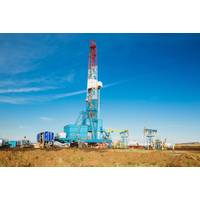
U.S. shale oil producers plan to keep drilling new wells despite this month's crude price drop but expect to revisit spending should pricing remain below $45 a barrel for several months. "We will not drill into oblivion," Tim Dove, chief executive of Pioneer Natural Resources Co, told investors on Tuesday at a J.P. Morgan energy conference in New York. Pioneer, one of the biggest operators in the Permian Basin, the largest U.S. oilfield, is confident that OPEC leader Saudi Arabia will not let oil prices remain near current levels for too long, Dove said. Newer operating efficiencies allow Pioneer to continue to drill more, he said.
US Shale CEO Sees Saudi Arabia Moving to Lift Oil Prices
Saudi Arabia likely will move to boost oil prices after a recent drop in order to prop its own national finances, the chief executive of U.S. shale oil producer Pioneer Natural Resources Co said on Tuesday. Oil prices have tumbled in recent weeks despite moves by Saudi Arabia and other members of the Organization of the Petroleum Exporting Countries last month to quell a global supply glut brought on in part by resurgent U.S. shale output. "I personally believe (the oil price) where we are right now is not sustainable. It comes in the form of two words: Saudi Arabia.
Chevron Boosts Permian Shale Output
Nearly a century after Chevron Corp amassed the No. 2 stake in America's largest oilfield, Chief Executive John Watson is hitting the accelerator on developing the company's vast Permian Basin holdings. In an interview, Watson made clear his desire to put the West Texas to New Mexico expanse in the ranks of Chevron's biggest ventures. That is a stark change from just five years ago, when Chevron executives rarely mentioned the shale basin. But with low oil prices, the company is now spending more than it makes to cover its prized dividend and find new reserves. Now, those 2 million Permian acres have emerged as to way to help fund both goals.
As Trump Targets Energy Rules, Oil Companies Downplay their Impact

President Donald Trump’s White House has said his plans to slash environmental regulations will trigger a new energy boom and help the United States drill its way to independence from foreign oil. But the top U.S. oil and gas companies have been telling their shareholders that regulations have little impact on their business, according to a Reuters review of U.S. securities filings from the top producers. In annual reports to the U.S. Securities and Exchange Commission, 13 of the 15 biggest U.S. oil and gas producers said that compliance with current regulations is not impacting their operations or their financial condition.
US Oil Rig Count Highest Since Sept. 2015 -Baker Hughes

U.S. drillers added oil rigs for an eighth week in a row to the most since September 2015, extending a ten-month recovery as energy companies boost spending to take advantage of a recovery in crude prices since OPEC agreed to cut production late last year. Drillers added eight oil rigs in the week to March 10, bringing the total count up to 617, versus 386 rigs a year ago, energy services firm Baker Hughes Inc said on Friday. The increase came despite a collapse in crude futures this week to a three-month low because the rigs activated this week were based on decisions made a couple of month ago when oil prices were higher. U.S.
US Shale Companies to Boost Spending as Banks Loosen Purse Strings
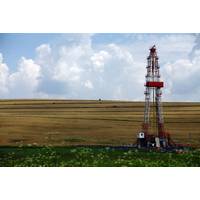
U.S. shale drillers are set to ramp up spending on exploration and production next year as recovering oil prices prompt banks to extend credit lines for the first time in two years. The credit increase is small, but with major oil producers worldwide aiming to hold down production in 2017, U.S.-based shale drillers are looking to boost market share to take advantage of higher prices, and greater availability of capital will make that easier. North America-focused oil and gas producers are expected to increase capital investments by 30 percent in 2017, according to analysts at Raymond James.
